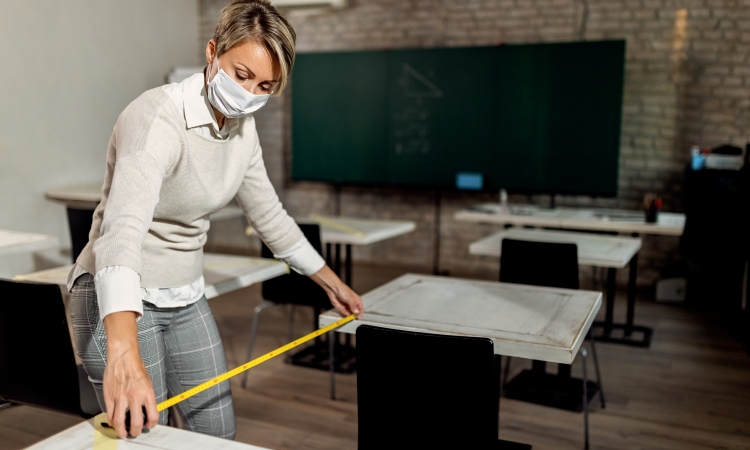Normally, procurement planning schedules for educational facilities and classrooms take place during the school year and culminate with implementation during the summer months. However, virtual classroom learning means that more students are at home during the pandemic, which gives school administrators an opportunity to plan their renovations and reconfigurations early.
One advantage to starting sooner rather than later is that you’ll have more flexibility in choosing when and how implementations take place. Suppliers often are crushed with demand in the summer months, which can result in longer delivery times or delays. By planning ahead, you can take advantage of their downtime and expect quicker turnarounds.
Here are a few tips to help you get started:
1. Design classrooms with learning in mind
Numerous studies, including this one, have found that classroom spaces have a significant impact on how students learn. In other words, student success depends on how the classroom is designed. For example, uncomfortable students will find it difficult to pay attention, so it’s important to have desks and chairs that adjust to accommodate different body types.
Because classroom sizes and shapes vary from school to school, there is no one-size-fits-all template for design. However, there are general principles that apply to most situations, like trying to create agile layouts that can be adjusted when necessary.
2. Keep safety in mind
 Today, effective classroom design also means creating a safe and sanitary space that takes into account the effects of the pandemic. That means procurement decisions will include new criteria, such as how easily furnishings can be cleaned. At the same time, layouts will need to accommodate social distancing and other health guidelines.
Today, effective classroom design also means creating a safe and sanitary space that takes into account the effects of the pandemic. That means procurement decisions will include new criteria, such as how easily furnishings can be cleaned. At the same time, layouts will need to accommodate social distancing and other health guidelines.
Likewise, the mix of furnishings could change, as your school may incorporate more sanitizing stations or additional signage to communicate health policies and practices – from wearing masks to washing hands.
3. Furnish with wheels
Flexibility is the key to classroom design that promotes safety and student engagement. To maximize flexibility, consider furnishings with wheels. That includes desks, bookshelves, whiteboards, workstations, and anything else that can be moved easily when the situation calls for it. Classrooms with moveable furnishings are dynamic, allowing for quick changes to basic configurations as conditions demand.
One counterpoint, however, is whether some furnishings should be fixed to enforce social distancing. If you’re worried students will wheel their desks too close together, then maybe those furnishings should be less mobile.
4. Get a team together for different perspectives
Classroom design requires input from various departments, including educators, administrators, operations and procurement teams, designers, health and safety professionals, and so on. Get your planning team together so that all perspectives are represented. With the extra lead time, you can work through difficult issues before you run up against urgent deadlines.
5. Explore new suppliers for your classrooms
When you get a jump on your reconfigurations, the extra time can be used to investigate new suppliers or learn more about what services your current suppliers offer. For instance, JK Moving works in partnership with Rentacrate and Buy Board to provide K-12 buyers with access to bulk discounts, web-based shopping, and unparalleled moving services.
JK Moving is here to help you maximize efficiency and peace of mind. We support your busy teachers, professors, and professional staff with packing and unpacking assistance, training, and an easy-to-follow labeling system. To download our information sheet and learn more, contact us today!


